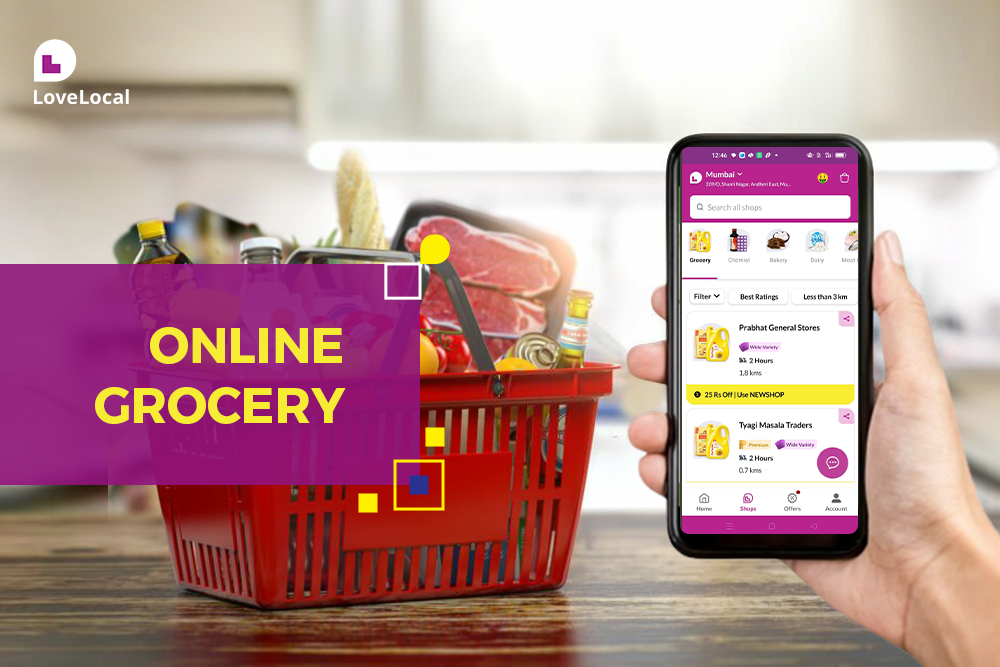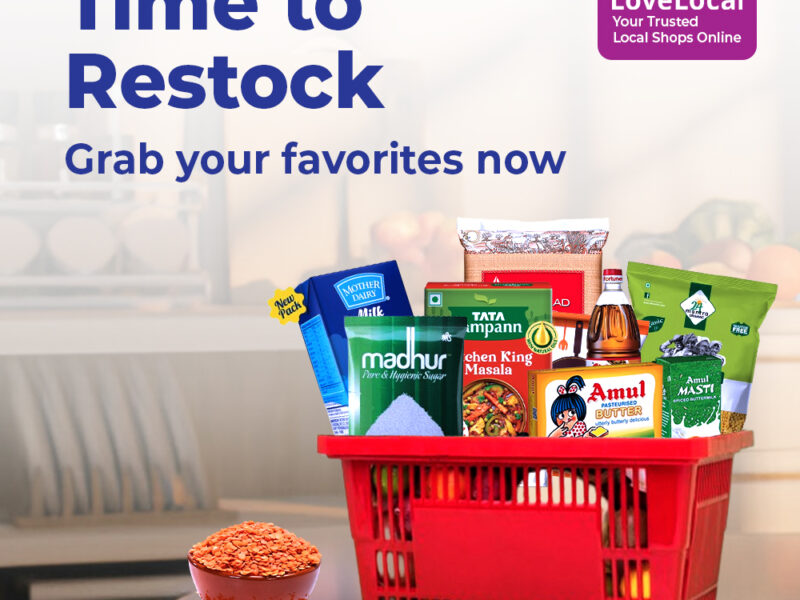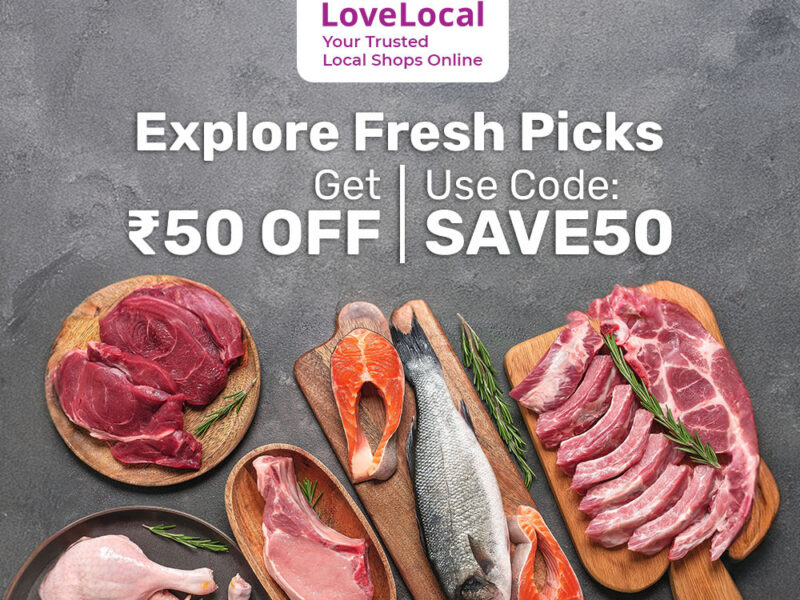Grocery shopping is a regular task for most people, but it can sometimes be overwhelming to navigate the aisles and make healthy choices. This article aims to provide a comprehensive guide to grocery shopping, focusing on essential items, healthy options, and budget-friendly tips.
Looking to stock up your kitchen? Check out our comprehensive grocery items list, featuring all your kitchen essentials. Find everything you need at your nearby grocery shop or opt for the convenience of grocery delivery near you. Explore popular items in grocery, including a wide range of Indian grocery items. With groceries online, shopping for your favorite grocery items is easier than ever. Experience the convenience of grocery items online shopping today!
Essential kitchen grocery items list:
Fresh Produce: The Fruits and vegetables are essential for a balanced diet. Choose a variety of colors to ensure you’re getting a range of nutrients.
- Grains: Whole grains like brown rice, quinoa, oats, and whole wheat bread provide fiber and essential nutrients.
- Protein: Include sources like lean meat, poultry, fish, eggs, beans, and lentils for muscle repair and overall health.
- Dairy or Alternatives: Milk, yogurt, and cheese provide calcium and vitamin D. Non-dairy alternatives like almond or soy milk are suitable for those with lactose intolerance.
- Healthy Fats: Avocados, nuts, seeds, and olive oil are different sources of healthy fats that support heart health.
- Canned or Frozen Foods: These can be convenient options for fruits, vegetables, and beans. Look for low-sodium or no-added-sugar varieties.
- Herbs and Spices: Flavor your meals with herbs and spices instead of salt and sugar for added health benefits.
Healthy Grocery Shopping Tips:
- Plan Ahead: Make a list based on your meal plan to avoid impulse purchases.
- Shop the Perimeter: Most fresh and healthy foods are located around the perimeter of the store.
- Read Labels: Look for products with minimal ingredients and avoid those high in added sugars, sodium, and unhealthy fats.
- Buy in Bulk: Purchase staples like rice, pasta, and beans in bulk to save money.
- Choose Seasonal Produce: Seasonal fruits & vegetables are often fresher and more affordable.
- Limit Processed Foods: Opt for whole foods over processed items, which are often high in unhealthy additives.
Budget-Friendly Grocery Shopping:
- Use Coupons and Sales: Take advantage of discounts and coupons to save money.
- Buy Generic Brands: Store brands are often cheaper than name brands and offer similar quality.
- Shop Online: Online grocery shopping can help you compare prices and avoid impulse purchases.
- Buy in Bulk: Buy non-perishable items in bulk to save money over time.
Grocery items names – indian grocery items list :
- Rice
- Pasta
- Bread
- Milk
- Eggs
- Cheese
- Yogurt
- Fresh fruits and vegetables
- Canned goods (e.g., beans, tomatoes)
- Breakfast cereals
- Snacks (e.g., chips, crackers)
- Beverages (e.g., juice, soda)
- Condiments (e.g., ketchup, mustard)
- Spices and herbs
- Cooking oils
- Sugar and flour
- Frozen foods
- Meat and poultry
- Fish and seafood
- Baking ingredients (e.g., baking powder, vanilla extract)
The LoveLocal Grocery Shopping Experience
What is LoveLocal Grocery Shopping?
LoveLocal grocery shopping revolves around the idea of supporting local farmers, producers, and businesses by purchasing locally-sourced products. It emphasizes the importance of community, sustainability, and quality, creating a symbiotic relationship between consumers and local suppliers.
The Benefits of LoveLocal Grocery Shopping
- Supporting Local Economy: By buying locally-produced goods, consumers directly contribute to the economic growth of their community, helping small businesses thrive.
- Fresher, Healthier Food: Locally-sourced produce is often fresher and retains more nutrients since it doesn’t have to travel long distances to reach consumers.
- Reducing Environmental Impact: LoveLocal shopping reduces the carbon footprint associated with transportation and packaging, promoting environmental sustainability.
- Fostering Community Connections: Shopping at local markets and stores provides opportunities for people to connect with producers, neighbors, and community members, creating a sense of belonging and camaraderie.
- Preserving Food Diversity: Supporting local farmers and producers helps preserve traditional farming practices and promotes biodiversity, ensuring a variety of foods for future generations.
Principles of LoveLocal Grocery Shopping
- Know Your Producers: Get to know the farmers and producers behind the products you buy, understanding their practices and values.
- Seasonal Eating: Embrace seasonal eating by purchasing fruits and vegetables that are in season, supporting local agriculture and enjoying the freshest produce.
- Minimize Packaging Waste: Opt for products with minimal packaging or bring your own reusable bags and containers to reduce waste.
- Explore Local Markets: Visit farmers’ markets, co-ops, and independent stores to discover unique, locally-made products and support a diverse range of businesses.
- Spread the Love: Share your LoveLocal experiences with friends and family, encouraging them to join the movement and support local businesses.
Conclusion:
Grocery shopping can be a daunting task, but with a little planning and knowledge, it can be a rewarding experience. By focusing on essential items, healthy options, and budget-friendly tips, you can make informed choices that benefit your health and your wallet.
LoveLocal grocery delivery near me is more than just a shopping habit; it’s a lifestyle choice that prioritizes community, sustainability, and quality. By embracing the principles of LoveLocal shopping, consumers can make a positive impact on their local economy, environment, and food culture while fostering meaningful connections within their communities.
Frequently Asked Questions (FAQs):
A normal grocery list typically includes items like fruits, vegetables, grains (rice, pasta, bread), protein sources (meat, fish, beans), dairy products (milk, cheese, yogurt), and pantry staples (spices, oils, condiments).
Plan your grocery list based on your meal plan for the week. Take inventory of what you already have, make a list of what you need, and organize it by categories (produce, dairy, etc.) to make shopping more efficient.
The 10 food products can vary depending on cultural and personal preferences, but commonly include items like rice, pasta, bread, fruits, vegetables, milk, eggs, meat (or alternatives), cheese, and yogurt.
This question is specific to the store or brand. You may want to highlight a popular or signature item that your customers love.
Include a variety of fruits and vegetables, whole grains, lean proteins, and healthy fats. Limit processed foods high in sugar, salt, and unhealthy fats. Look for fresh, minimally processed options and read labels for added sugars and unhealthy ingredients.



